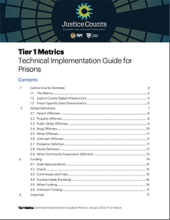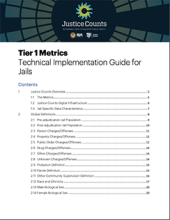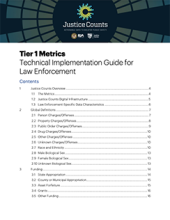Use of force
Justice Counts Technical Implementation Guide for Jails
Justice Counts Technical Implementation Guide for Law Enforcement
The National Initiative for Building Community Trust and Justice
Impact of the National Initiative for Building Community Trust and Justice on Police Administrative Outcomes
Social Interaction Training to Reduce Police Use of Force
Police accounts of critical incidents: a descriptive and empirical assessment
Body-Worn Camera Site Spotlight: Jonesboro, Arkansas
Optimizing Body-Worn Cameras to Enhance Common Police Practices and Field Investigations
Shooting and Holding Fire in Police Work: Insights From a Study Informed by the Binder and Scharf Model of Deadly Force Decision-Making
Do body-worn cameras reduce disparities in police behavior in minority communities? Evidence of nuanced influences across Black and Hispanic neighborhoods
Investigating the prevalence and utility of police body-worn cameras in the George Floyd protests
Behavioural Indicators of Motives for Barroom Aggression: Implications for Preventing Bar Violence
De-Escalation Training: Safer Communities and Safer Law Enforcement Officers
Depending on whom you ask, “de-escalation training” is either a miracle cure or a four-letter word.
As high-profile, deadly confrontations between law enforcement officers and civilians continue to generate widespread public concern, de-escalation training has been hailed as the solution for this seemingly intractable problem. Public officials and policy makers from across the political spectrum have embraced de-escalation training as the key to safer interactions...






